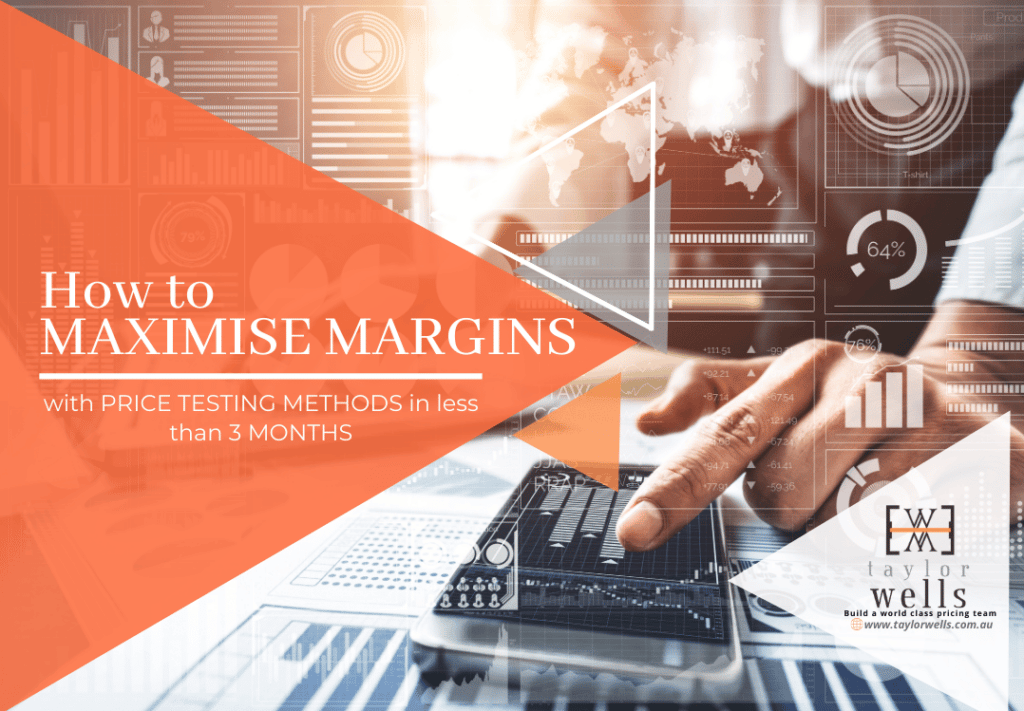
Consumer Packaged Goods Trade Spend: How to Generate Profit Value for the Business and Your Retail Customers 🛍️
Does consumer packaged goods trend spending cut into your profits?
>Download Now: Free PDF How to Maximise Margins with Price Trials
When it comes to consumer packaged goods (CPG), the manufacturer-retailer relationship is not always black and white. Sometimes, the relationship can be as smooth as a calm sea. But, when it comes to the topic of trade spending, it can be quite stormy. Trade spend is cash money manufacturers give to retailers to sell and promote their products on their behalf. This includes discounts/coupons, advertising, tokens, coupons, discounts, and layout/positioning in the store and shelf, etc.
As you can imagine, trade spending negotiations are not simple. Manufacturers want to know they are getting something for their money. They will spend a great deal of time covering areas such as COD payment terms, annual fees, slotting fees, free items on the launch, return fees, reverse logistics fees, new stores fee, introductory allowances, volume pricing, transaction costs, promotions to end-consumers (BOGO/TPR), tagging of the retailer in external marketing (TV, Radio Print ads), and ads in retailer circulars and sampling.
So, how does trade spending work in consumer packaged goods?
Trade spending — a usual practice within CPGs (consumer packaged goods) and retail companies. Basically, trade spending is the amount that a company spends to improve demand for its products, preferential shelf display locations (slotting), including coupons, and co-advertising, to name a few.

While this is a normal part of doing business for many CPG and retail companies, the accounting and financial reporting for trade spending varies depending on the type of spending.
Normally, manufacturers give a 30% price decrease of the normal price of the items to give the retailers enough room for discounts and promotional gimmicks. However, this also means that it reduces the profits which define manufacturers and retailers to stay in business. Ultimately, it will erode the brand’s premium price to the point that consumers are not willing to pay. This is because overusing the promotional level often warps consumers’ price perception. As a result, they end up dismissing the product, believing it has diminished in value.
Common forms of consumer packaged goods trade spending
The money manufacturers give to retailers to promote their products is often used in the following ways:
- Coupons – the revenue is considered redeemed when the coupon is used from a previous purchase. For example, when a $5.00 price item is bought along with a 25% discount coupon, the 25% discount of the $5.00 price, which is $1.25, is included in the sales.
- Buy one get one free coupon – when an item is purchased with the buy one get one free coupon, the revenue collected is considered for one purchase. For example, if the item price is $2.00 with a related cost of $1.00, using the buy one get one free coupon, the revenue collected is $2.00 with the cost of goods of $2.00.
- Co-advertising – when a retailer decides to advertise, they commonly invite the CPG company to jointly advertise with them. The retailer pays the full costs of the advertisement and the company reimburses the retailer for a portion of the advertisement. If the company had past dealings with advertising ads, then it has an additional benefit that is separated from the joint venture with the retailer. The reimbursement of the CPG company is considered as a marketing expense; whereas, the amount that the retailer received is the offset of the advertisement expense.
But, when a manufacturer gives a budget to a retailer to co-advertise, that would be considered a cost on the P&L i.e., S&GA. Whereas, the retailer would record it as a gain to the P&L as they would see a reduction in their costs of goods sold.
- Slotting fees – the fee paid by the company to the retailer to have their products put on the shelf. Also seen as a reduction of revenues by the company and the retailer. A reduction in costs of goods sold.
How to best utilise trade spend
Promotions given to consumers are the largest hole in both manufacturers’ and retailers’ profits. Since retailers want to properly introduce the product to the buyers, they offer giveaways and discounts. But, if the external marketing strategy is already pulling in the customers, then maybe the retailers can reduce their trade spending. External marketing is the digital medium like social media while the traditional medium is like radio and print media.
Some manufacturers increase revenues by cutting overheads and improving product quality. But, these cost changes have to be offset by the increases in trade spending. Often, there is minimal improvement after trade spending is accounted for. The only way to minimise trade spending is to optimise the entire system and boost bottom-and top-line growth.
Much of trade spend optimisation is concentrated on “push efforts” such as discounts and promos rather than on “pull efforts” designed to draw the customers into the stores – i.e., things like media advertising.
Spend optimisation
Spend optimisation is organised around push-pull tactics because big conglomerate stores compete daily for smaller shelf space with competing brands and overwhelming advertisement clutter.
The problem with a tactics led spend optimisation programme, however, is that it eats through profits quickly and encourages consumers to “pantry loading” mode whenever there is a discount on products. For example, advertising radio announces a big promotion, and consumers then go to the store to stock up on items they want and are prepared to buy. Additionally, executing a discount is very risky, after all. Poor implementation could result in hurting your profits. This could potentially attract the wrong types of customers: people who will only buy from you if there is a discount.
A tactical trade spending strategy often results in low profit margins for both the manufacturer and retailer. On top of this, off-site resources run low. The manufacturer is left to manage serious branding problems as the consumer believes their products (even thriller premium ones) are low value. This, in turn, impacts the long-term strategy, as the manufacturer is forced to reduce investments in R&D, product enhancements, and marketing.
Four approaches the manufacturer can use to control trade spending and drive profitability:
To avoid profit loss from a tactical led pricing and trade spend strategy, manufacturers and distributors should consider the following approaches:
-
The input approach
Trial different promotions in different stores. Find which promotion is effective in which store and for which brand. The approach here is to find the hot spots where your campaign is successful. That way, you can put more of your brands in that store. Also, the trial giving incentives to the retailers to encourage them to put more of the products on the shelves.
-
The performance approach
This is when you give rewards to the retailers if they can outsell the products versus their competitors. A variant of this is the bundled approach. Instead of individual sales, the retailer obtains a reward for selling more of its products in a single period. It is up to the retailer on what strategy to use in selling the products quickly.
-
The far-and-between approach
One way to minimise trade spending is to make fewer and simpler promotions. The advantage of streamlining promotional planning is that you eliminate individual or ad hoc / reactive promotions every time a new product comes out or the market turns.
It is common for manufacturers to use temporary price decreases sporadically throughout the year. Another way to drive revenue could be to section off some products to everyday low purchase prices (EDLPP). This works in favour of the manufacturer because it can discourage retailers to buy in bulk in one month then none the next month. With the everyday low price, buyers can no longer juggle which product to buy and consumers know what they are getting.
-
The elimination approach
Another approach to try (though some may think this is radical) is to cut back on the promotions of the product. What really happens to volume? Do consumers still buy your products? What’s the impact on the P&L? This approach is best applicable to premium brands (as low-value products are generally on EDLP anyway). Choose products that customers care about, and brand equity is greater than its price. While doing this, spend the money on the advertising budget to increase brand visibility and capture more word-of-mouth recommendations. Market share might decrease, but the gross margin percentage per SKU might significantly increase. You can also recoup market share using EDLP and lower-value brands. But again think about the promotional elasticity here too as you can gain margin and share with strategic discounting.
Discussion: A mutual benefit for both Manufacturers and Retailers
The relationship between manufacturers and retailers need not be antagonistic. A firm understanding of both parties’ commercial position, margin targets and business strategy can reduce the negative tension between both parties when it comes to trade spend.
Most manufacturers want a trade spending system that offers incentives to retailers for selling their products quickly, efficiently and at more profitable price points. Why? Like retailers, manufacturers want to increase per unit gross margin and market share ideally.
Manufacturers realise that retailers want to be recognised. And paid for the shelf and floor spaces they provide to manufacturers. They also put a good deal of effort into promoting your products. Offering retailers active performance bonuses for their effort and good thinking will pay off for both of you. Also providing them with pricing and consumer insights that drive bottom-line profitability and top-line revenue is a great way to keep a strong business partnership – one that rewards good retailing behaviour and grows the share of the pie for all.
Optimising Pricing Strategies for Consumer Packaged Goods
Optimising pricing strategies for consumer packaged goods (CPG) is crucial for businesses to maximise profits and stay competitive in the market. By carefully analysing market dynamics and consumer behaviour, companies can implement effective pricing tactics.
Firstly, it’s essential to understand the various pricing strategies available. For example, penetration pricing involves setting low initial prices to quickly gain market share, while skimming pricing sets high prices initially to target early adopters.
Next, conducting thorough market research is vital. By evaluating competitors’ pricing strategies and assessing consumer preferences, businesses can determine the optimal price point for their CPG products.
Moreover, considering the value proposition is key. Companies must align their pricing with the perceived value of their products to ensure they are competitive yet profitable. For instance, premium CPG brands may justify higher prices by emphasising quality or unique features.
Furthermore, dynamic pricing can be employed to respond to fluctuations in demand or market conditions. For example, offering discounts during off-peak seasons or adjusting prices in real-time based on inventory levels.
Additionally, segmentation pricing allows businesses to tailor prices to different consumer segments. By understanding the varying needs and preferences of different customer groups, companies can optimise pricing strategies to maximise revenue.
Ultimately, optimising pricing strategies for consumer packaged goods requires a comprehensive approach that considers market dynamics, consumer behaviour, and the value proposition of the products. By implementing the right pricing tactics, businesses can achieve their revenue goals while satisfying customer demand and staying ahead of the competition in the CPG market.
Navigating Pricing Challenges in Consumer Packaged Goods Markets
Navigating pricing challenges in consumer packaged goods (CPG) markets requires careful consideration and strategic planning to overcome obstacles and maintain profitability.
Firstly, it’s important to recognise the complexity of CPG markets. With diverse consumer preferences, intense competition, and regulatory constraints, pricing decisions can be challenging.
One significant challenge is managing pricing pressure from retailers. Large retailers often negotiate for lower prices from CPG manufacturers to maintain their profit margins, putting pressure on suppliers to find a balance between profitability and maintaining retailer relationships.
Another challenge arises from the proliferation of private-label brands. These lower-priced alternatives offered by retailers can undercut branded CPG products, leading to price wars and eroding brand loyalty.
Additionally, fluctuating input costs, such as raw materials and transportation, can impact pricing decisions. CPG companies must carefully monitor and adjust prices to mitigate the effects of cost increases while remaining competitive in the market.
Furthermore, navigating international markets presents unique pricing challenges. Currency fluctuations, import/export regulations, and cultural differences can all affect pricing strategies and profitability.
To address these challenges, CPG companies can adopt several strategies. Implementing value-based pricing, where prices are aligned with the perceived value of the product, can help justify higher prices and differentiate from lower-priced alternatives.
Moreover, investing in innovation and product differentiation can support premium pricing strategies, allowing CPG brands to command higher prices based on unique features or benefits.
In essence, navigating pricing challenges in consumer packaged goods markets requires a proactive approach that considers market dynamics, competitive pressures, and cost considerations. By carefully analysing the landscape and implementing strategic pricing tactics, CPG companies can successfully navigate challenges and maintain profitability in the market.
Implications
- Trade spending is necessary as this is the bridge between the manufacturer and retailer.
- Ultimately, the end receiver of trade spending is the customer.
- Poorly planned trade spending can reduce profits for both parties.
- Varying trade spending strategies along with carefully planned promotions — both beneficial for the manufacturer and the retailer.
〉〉〉 Get Your FREE Pricing Audit 〉〉〉
Bottom Line
Successful trade promotion strategies are about specifics. Build your price waterfall right from the consumer and track profitability at the SKU level. Different geographical regions, retail chains, product categories, and brands all can create different opportunities for cutting costs. Also, improving alignment between you and your customer can produce better results for everyone.
To make decent profit margins, companies need to exploit these differences, not wipe them out. Remember:
- Consumer packaged goods trade spending can be beneficial to both parties if the promotion strategy is sound.
- Discounts are encouraged even if cut profits, in the long run, will get better profits.
- Careful research on the different demographics such as area, preferred brands and product categories can increase the manufacturer’s revenues.
Click here to download a whitepaper with key insights on driving your pricing strategy.
For a comprehensive view and marketing research on integrating a high-performing capability team in your company,
Download a complimentary whitepaper on How To Maximise Margins.
Are you a business in need of help to align your pricing strategy, people and operations to deliver an immediate impact on profit?
If so, please call (+61) 2 9000 1115.
You can also email us at team@taylorwells.com.au if you have any further questions.
Make your pricing world-class!
Related Posts
Leave a Reply Cancel reply
Categories
- marketing strategy (26)
- Organisational Design (14)
- Podcast (114)
- Pricing Capability (87)
- Pricing Career Advice (10)
- Pricing Recruitment (19)
- Pricing Strategy (290)
- Pricing Team Skills (13)
- Pricing Teams & Culture (24)
- Pricing Transformation (47)
- Revenue Model (25)
- Sales Effectiveness (27)
- Talent Management (7)
- Technical Pricing Skills (35)






